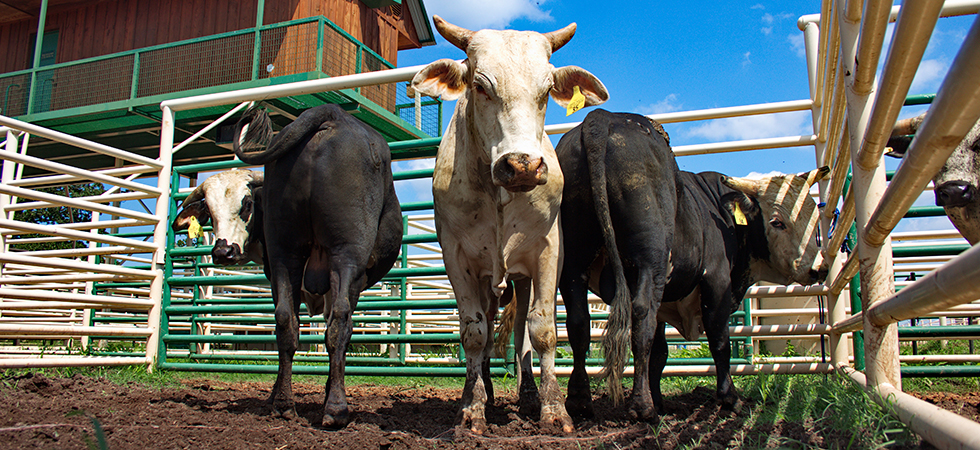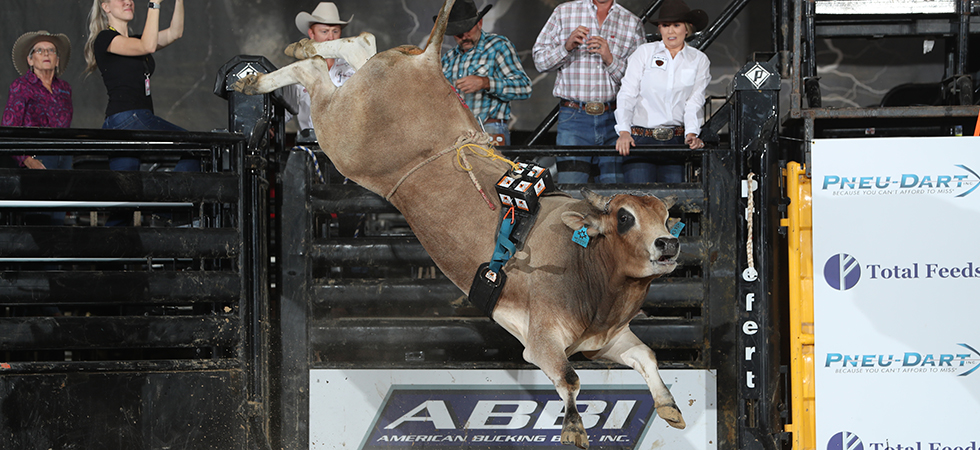
We’ve got the perfect solution for you.
Through American Bucking Bull Inc. and PBR, we have created a program to introduce interested parties to certified Stock Contractors to make your chance to become a bull owner a reality. It’s a simple and easy way to let you know that who you are going into business with is trusted, highly informed and skilled in the bucking bull industry, and excited to welcome new partners into the business.
For more information please contact ABBI Executive Director Jay Daugherty at 719-242-2800 ext. 3230 or jd@pbr.com.
American Bucking Bull Inc. (ABBI), which introduces young bucking bulls at select Professional Bull Riders (PBR) events, is dedicated to unifying, developing and promoting the bucking bull industry through pedigree preservation; enhancement and promotion of bucking bull ownership, breeding, and welfare; and development of programs and events showcasing the world's finest bucking bull stock.
In recording and preserving the pedigrees of the world's premier bucking bulls, ABBI is the third-largest cattle registry in the U.S. and the world’s largest bucking cattle DNA registry with more than 200,000 registered animals. The ABBI, a sister organization to the PBR, was formed in 2004 to help develop the sport’s animal athletes and increase their value through documented quality blood lines. Through its Classic events, the ABBI also holds competitive events for bucking bulls, paying out more than $3 million each year in prize money strictly to the animals.
Each year in Las Vegas, ABBI conducts the ABBI Premier Sale, where animal athletes can sell for more than $100,000. ABBI brings together a diverse group of genetics, selected through an extensive screening process, and offers these bucking bulls for sale once a year.

ABBI has developed a series of bucking bull events, consisting of Yearling (1-year-old), Futurities (2-year-olds, including Junior and Cowgirl Futurities), Derby (3-year-old) and Classic (3 and 4-year-old) competitions. This includes the year-end Futurity Wild Card event in Duncan, Oklahoma,and Classic Wild Card event in Las Vegas. The Top 5 Wild Card bulls join the Top 35 year-end ranked bulls for the annual ABBI Classic World Finals held in conjunction with the PBR World Finals.
ABBI’s core mission is to record and preserve the pedigrees of the world’s premier bucking bull lineage while maintaining and enhancing the integrity and value of The American Bucking Bull breed. ABBI also provides beneficial services for ABBI members which improve and enable “best practices” in bucking bull ownership, breeding, care, training and welfare.
Additionally, ABBI is vested in generating interest and growth in ABBI through ownership, membership, education, sponsorship and involvement through marketing, promotion, advertising and publicity of The American Bucking Bull breed, ABBI membership benefits, services, competition and events. ABBI works diligently to develop diverse and comprehensive programs and events that educate and familiarize owners, members, the general public and the media in the unique heritage, history and qualities of The American Bucking Bull.

“Buck” refers to the height and elevation achieved with the front feet and shoulders as a bull leaves the ground in his front end. This elevation happens prior to “break over” and kick. Bulls that “get in the air” and get their front feet higher off the ground as they peak and break over get the most credit in the buck category. The number of jumps they complete during the course of the trip and how much ground they cover is also a factor.
“Kick” refers to the extension and snap of the hind legs at the peak of each jump. Determining factors as to the number of points earned in this category are how high and how hard a bull kicks, how much vertical body angle he achieves as he kicks, and whether or not he kicks each and every jump. Additionally, bulls that kick at the peak of each jump instead of waiting until their front feet reach the ground receive more credit.
“Spin” refers to a bull turning back and the number of revolutions he makes. In this respect it coincides with speed. Spin is the most difficult to assess if a bull is only ridden for a jump or two. In this situation, a judge must assume that the amount a bull was spinning (or the number of rounds) would have continued at the same rate for eight seconds. For this reason, in order to achieve attention for spin a bull should do it early in the out. Determining factors when assessing spin are: how fast (how many rounds if ridden eight seconds or rounds during the 4 seconds that dummy is in place), how far around a bull goes with each jump (bulls who take two jumps to complete a revolution get more credit than those who take four jumps). It should be noted that often speed and spin can compromise buck and kick and vice versa, but the optimum goal is to have an individual that does everything effectively.
Intensity” is nothing more than the amount of effort, or level of intensity that a bull is using as he bucks. In other words, how much try is he putting into the trip. As in the degree of difficulty category, if a bull demonstrates the other core elements, it would be hard not to assume that he is using a high degree of intensity as he bucks. To demonstrate intensity, a bull must execute moves with enthusiasm and vigor to be considered intense in his efforts. The element of intensity can often allow separation among bulls that do everything right.
There are a number of factors that can occur in a bulls trip that elevate “Degree of Difficulty”, and it is important to note that the bull that does everything else right automatically has a high degree of difficulty for that simple reason. That being said just because a bull is honest and doesn’t use tricks to get a rider off, he shouldn’t be penalized in this category for doing things right. Keeping this in mind, there are elements of a trip that some bulls employ that make them harder to ride than bulls that don’t. These things don’t necessarily make a bull better, and again it should be mentioned that the most desirable methods of increasing degree of difficulty are by doing the core elements (buck, kick, spin) well. Further, the bull that is using time and energy performing some of the trickier elements generally associated with “Degree of Difficulty”, is usually losing ground in some other area. The most generally defined elements of this category are: drift or fade, accomplished by a bull covering ground as he spins; moving forward or lateral in the spin; belly roll—a twisting of the bulls spin rolling a rider from side to side; head to hip spinal flexion, drop, direction change; and a lack of timing.